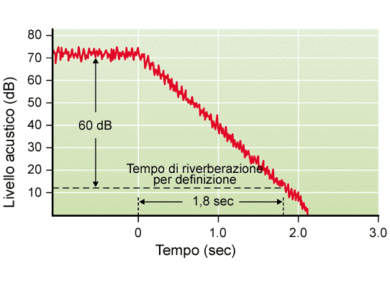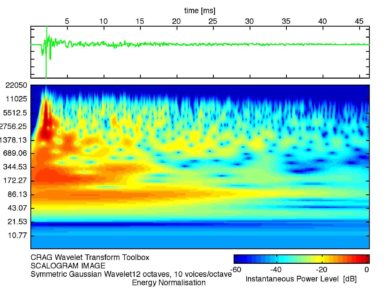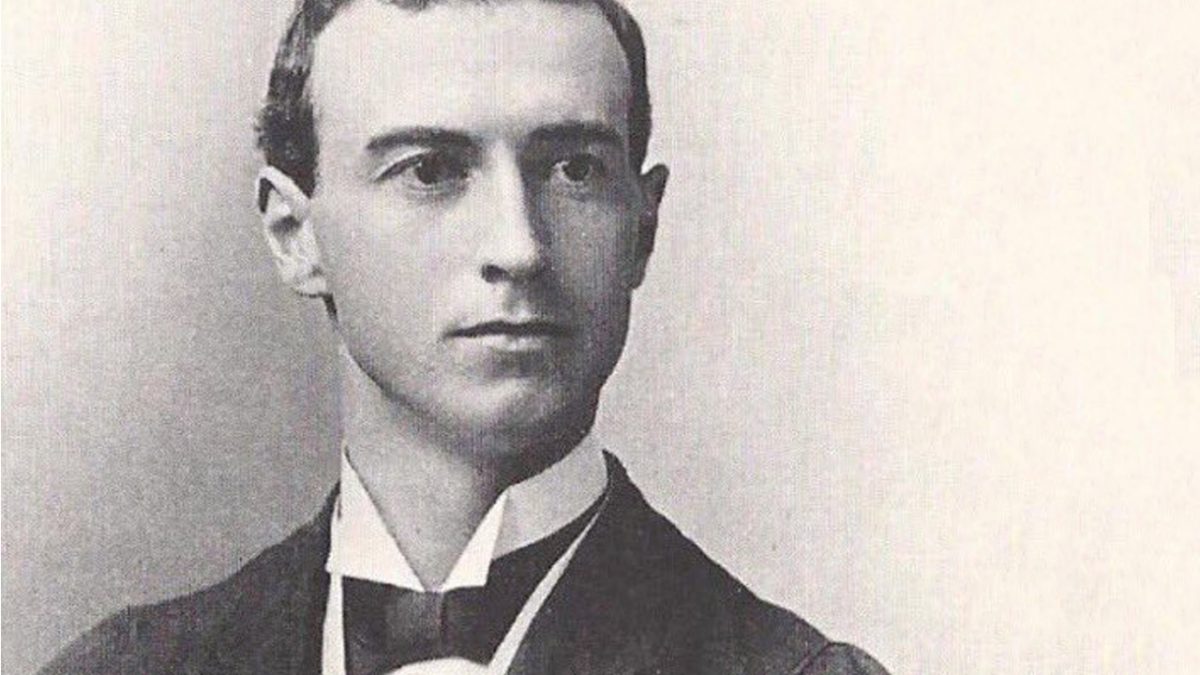Reverberation time and Sabine’s Formula
The most accurate method to define the Reverberation Time (T60) into a room, is the measurement on site with technical instruments.
Anyway, it is possible to estimate the T60 value using the empiric method based on the Sabine’s Formula, getting pretty accurate evaluations.
For example, for simple spaces, with regular shapes, the Sabine Formula let you get accurate evaluation and reliable results.
Sabine’s Formula
This method is based on the principle of diffuse acoustic field and let you evaluate the reverberation time thanks to the formula below:
Sabine’s Formula : T60 = 0,161 * (V/A)
In this formula, the value of T60 is expressed in seconds, V indicates the volume of the analyzed room (expressed in m3), and A is the equivalent absorption surface (expressed in m2).
The equivalent absorption surface (A) is calculated with the formula below:
A= ∑(αi*si)
In this formula, si represents the absorbing areas and αi is the sound absorbing coefficients of these surfaces, for specific frequencies (usually 500 or 1000 Hz).
The sound absorbing coefficient is a characteristic of any surface and generally it is specified in the technical sheets or certifications of construction materials.

Case study: How to calculate the Reverberation Time (T60)
We have to intervene into a canteen where the reverberation is too high and generates confusion.
The dimensions of the space are 20 x 8 m and 4 m high: the total volume is 640 m3, the floor surface is 160 m2, the ceiling area is 160 m2 and the walls are 224 m2.
The floor is made of porcelain tiles, a material generally used into public environment because its resistance qualities, but, from an acoustic point of view, very reflective: the sound absorption coefficient is about α = 0,02.
The walls and the ceiling are finished with painted plaster, then the sound absorption coefficient is about α = 0,05.
To simplify the calculation, we will not consider the glass surfaces of windows or doors.
We remind that it is possible to find the sound absorption coefficient (α) of a material, from the technical sheets or certifications of construction materials, considering as frequencies 1000 Hz.
- The first step is the definition of the starting Reverberation Time (T60) using the Sabine’s Formula:
T60 = 0,161 x (V/A)
V = 640 m3
A = (floor: 160 m2 x 0,02) + (ceiling: 160 m2 x 0,05) + (walls: 224 m2 x 0,05) =22,4 m2
According to these values the T60 will be 4,6 seconds.
- Considering the intended use of this place as a canteen, we know that the T60 has to be reduced, to get a good level of acoustic comfort, from 4,6 seconds to around 1/1,2 seconds.
Now we will consider to install on the ceiling and on the wall around 90 m2 of sound absorbing surface with a value of α (sound absorption coefficient) as 0,8:
A = 22,4 + (90 x 0,8) = 94,4
- Using this value of equivalent absorption surface (A) we will calculate the obtained Reverberation time using the Sabine’s Formula:
T60 =0,161 x 640 / 94,4 = 1,09 seconds
Installing 90 m2 of sound absorbing panels with α = o,8 it is possible to reduce the Reverberation time from 4,6 seconds to 1,09 seconds and in doing so, we have greatly improved the acoustic comfort of the diners in the canteen.

